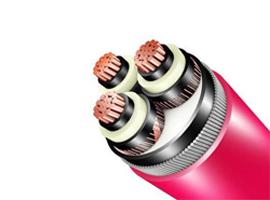What is Medium Voltage or MV Cable and Its Uses?

Medium Voltage cables, or MV cables, is a category defined by the International Electrotechnical Commission (IEC) as having a voltage rating of above 1kV up to 100kV.
Where is Medium Voltage or MV Cable used
Power supply for substation construction
Distribution of power to remote places
Applications ranging from 5kV to 35kV are available.
Substations
Transformers
Sets of medium voltage generators
To cut down on downtime, choose a high-quality product that will last and can withstand harsh situations. Choose a medium voltage electrical cable source that stocks, custom cuts, packages, and connectorizes the product so it's ready to install as soon as it comes to keep people safe and save money.
Medium Voltage Electrical Cable Benefits -
- Extremely adaptable and long-lasting
- Installation is simple.
- Flex life is better, and it lasts longer.
- Designed to endure a lot of punishment.
- Abrasion, oil, impact, ozone, and ripping resistance
- Pulling, twisting, and tension resistance are improved by the reinforced jacket. Factory installed terminations are also available (can be custom)
- Cut to the precise length you require
- Safety-tested electrically (electrical testing report should be provided)
- Copper conductors that have been tinned for enhanced flexibility
- Moisture, heat, and ozone-resistant insulation
- For industrial robustness, braided tin copper shielding is used.
- Abrasion, ripping, and cut resistance are all features of this heavy-duty outer jacket.
MV Cable Sizes
Our 10kV, 11kV, 20kV, 30kV and 33kV cables are available in the following cross-sectional size ranges. Larger sizes are available upon request.
Medium Voltage Cable Characteristics and Composition
- Conductor
- Internal semiconductor screen
- Insulation
- External semiconductor
- Metal screen
- Protection against water (only -ol and -2ol type cables)
- Inner sheath (only for armoured cables)
- Armour (only for armoured cables)
- Outer sheath
The most important standards for medium voltage cables are:
- IEC 60502-2: the most widely used international standard for medium voltage cables, it covers rated voltages up to 36 kV and a broader design and testing scope, including single-core and multi-core cables, armoured and un-armoured cables, and both types of armouring "tape and wire."
- IEC / EN 60754: this standard is used to determine the amount of halogen acid gas released when insulating, sheathing, and other materials catch fire.
- IEC / EN 60332: in the event of a fire, this standard measures the spread of flame along the cable length.
- IEC / EN 61034: establishes a test for determining the smoke density of cables burning in particular situations.
The most prevalent insulating compounds used in medium voltage cables are ethylene propylene rubber (EPR) and cross linked polyethylene (XLP). In terms of jacketing compounds, you will find polyvinyl chloride (PVC), chlorinated polyethylene (CPE) and Hypalon (CSPE). Hypalon is a chlorosulfonated polyethylene.. The most common combination of these insulation and jacketing compounds in medium voltage cables is an EPR insulation with a PVC jacket.
The most common range of medium voltage power cables are as follows:
- Copper or aluminium single core cables
- Copper or aluminium three core cables
- Copper or aluminium three single-core cables
MV Cable TYPES
- Teck Cables
- Shielded Cables
- Concentric Neutral Cables
- Paper-Insulated Lead-Covered Cables
- Submarine Cables
- Mining Cables
- Aluminum-Sheathed Cables
How does MV Cable compare to HV Cable?
Medium voltage cable transmits medium voltage of between 1kV to 100kV and voltage range of between 240V and 360V. HV cable transmits voltage high voltage of above 100kV and a voltage range of above 600V.
Australian Cable
Znergy Cables is a leading supplier of medium voltage cables, which we consider to range between 3.3kV and 45kV. Our MV XLPE insulated cables are manufactured in accordance with various British and international Standards.
Our standard medium voltage cable portfolio, as a specialist MV cable supplier, includes cable with single and 3-core copper or aluminium conductors, steel or aluminium wire armour for mechanical protection, and various application-specific materials such as Polyvinyl Chloride (PVC), Polyethylene (PE), Cross-linked Polyethylene (XLPE), and Ethylene Propylene Rubber (EPR) (LSZH). We also offer medium voltage standard cables in triplex configuration, which are created to meet specific power network requirements. Our MV cable products are used in a variety of industries, including construction and power generation.
They're frequently utilised for power distribution between high-voltage mains and low-voltage applications, as well as by utility companies to connect residential and industrial complexes to the major grid, as well as renewable energy sources like wind and solar farms.
Our MV cables come in a variety of lengths, including extended long lengths, to make installation easier and reduce the number of joints.

Comments